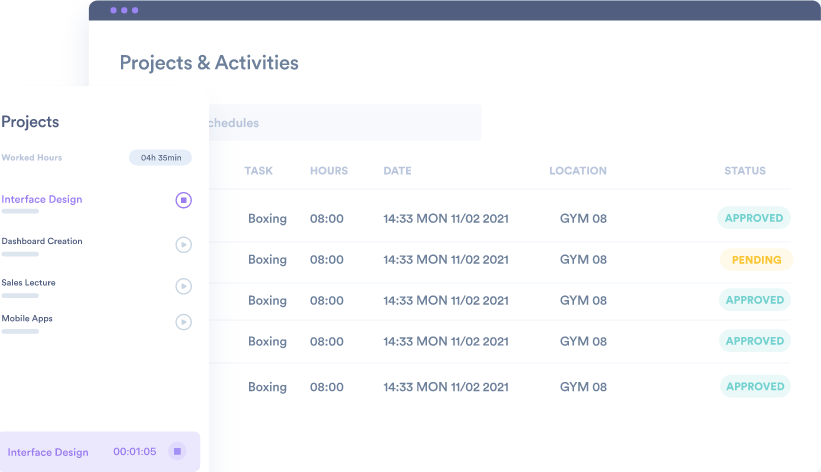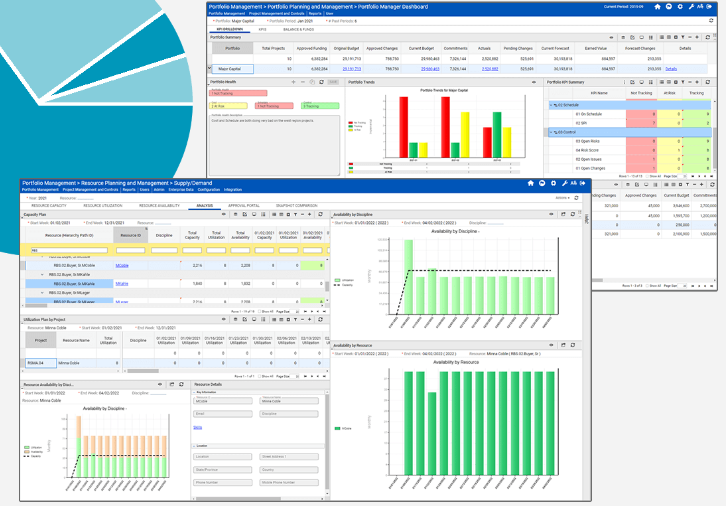Cost overrun is one of the biggest problems in project management. It’s an issue that can quickly spiral out of control and lead to significant losses for everyone involved. But, when managed correctly, project costs can be controlled and even used as a competitive advantage.
Project management can be a balancing act between competing demands, but one element that can never be ignored is cost. Whether you’re building a bridge, launching a new product, or planning an event, effective cost management is essential for project success.
This guide will discuss:
- What Project Management Is
- Why You Need a Project Cost Management Plan
- The Project Cost Management Core Process
- Tips to Help You with Project Cost Management
- The Best Software to Help You with Project Cost Management
So get ready to tighten your purse strings and learn to manage your project costs like a pro!

What is Project Cost Management?
Project Cost Management, or PCM, is a vital project management knowledge area that deals with identifying, estimating, and controlling costs associated with a project.
PCM primarily focuses on two key objectives:
- Estimating the cost of the project accurately;
- Controlling costs throughout the life cycle of the project.
Project managers achieve these objectives through various activities such as budgeting, forecasting, and monitoring spending against predetermined baselines.
Relevance with Other Business Processes
Project Cost Management is closely related to other governance processes:
- Scope management: The scope of a project defines the work that must be done to complete it. Accurate cost estimates are needed to determine whether the project is worth doing.
- Time management: Time is money, and good time management ensures that tasks are completed on schedule and within budget. A well-managed project schedule can help you identify problems early and take corrective action before costs spiral out of control.
- Quality management: Quality assurance is critical for successful projects because substandard results lead to additional expenses. Cost estimating activities should include an element of quality verification to ensure that all deliverables meet customer requirements at the lowest possible cost.
Together, these four areas of project management comprise a successful project.
Why Need a Project Cost Management Plan
A project cost management plan is essential for helping organizations identify, estimate, and control costs associated with the development of a product or service. It benefits you in several ways:
Helps Remain Accountable
A comprehensive project cost management plan helps to ensure accountability, as all stakeholders are accountable for their part in achieving the desired goals within established constraints.
When planning for a project, you must consider the cost of resources like labor, materials, and overhead costs. Having a plan in place to manage these costs effectively, will help keep everyone on track.
Minimizes Expenses
Every project manager would like to complete their project within budget, and a good cost management plan can help them do this. Having a well-defined strategy for managing costs, will allow you to identify any potential issues early on and make changes before they become too costly.
Improves Financial Estimation and Planning
Project cost management is a vital element of project planning and execution. It helps to accurately estimate the financial resources required for a given task, as well as provide an accurate assessment of potential risks associated with completing the task. This information helps develop effective plans for the completion of the project within budget.
Buffers Against Risk
The cost of a project can quickly add up, and it’s important to consider the risk of unforeseen costs. A project cost management plan helps you build buffers that help protect against any unexpected costs, allowing for smoother execution of the project.

Improves Operational Efficiency
By having a project cost management plan in place, you can ensure that all resources are being used efficiently and effectively. For example, if the budget for a particular task is exceeded, it may be necessary to reassess how resources are allocated or consider alternative solutions.
Brings Business Process within A Structure
Project cost management plans provide a structure for the project’s business processes. It helps to ensure that all participants are aware of their roles and responsibilities, as well as any other expectations related to costs. This allows you to maintain control over the project’s budget from start to finish.
Helps with Task Prioritization
When managing a project, it’s important to prioritize tasks and activities to ensure that the most important ones are completed on time. With a cost management plan in place, you can easily identify which tasks have higher priority due to their associated costs. This will help you allocate resources more efficiently and avoid costly mistakes.
Project Cost Management Core Process
The core process of Project Cost Management revolves around four key steps:
- Resource Planning
- Cost Estimation
- Cost Budgeting
- Cost Controlling
Now we’ll take a closer look at each of these steps.
Resource Planning
Resource planning is the process of identifying and assigning resources necessary to complete a project. It involves analyzing the scope of the project, including people needed, equipment, tools, and time frames for each task. This helps to create an estimate of costs as well as track resource allocation. Additionally, it’s important to plan for any potential problems that may arise and affect available resources.
While planning your resources, you must also know the following:
- Number of people needed
- Required experience to perform the tasks
- Tools and equipment necessary
- Schedule of activities
- Possibility of unavailability of resources
The resource plan should also specify how much each resource will cost in terms of money or time. This information can then be used to accurately estimate the total cost of the project.
You should also plan for the unavailability of specific resources. For example, if a specific tool is not available, you should plan and budget for a suitable substitute.
Cost Estimation
After identifying and assigning resources, the next step is to estimate the cost of each resource. This involves calculating labor costs based on wages, materials needed for the project, overhead expenses like rent or utilities, and any other necessary fees associated with the completion of the project.
Cost estimation is a complex process that requires careful analysis and accurate data collection. Because it can be difficult to predict all potential risks and factors in advance, you may have to revise your estimates during the life cycle of the project. This helps you more accurately anticipate changes in cost over time as well as unforeseen issues along the way.
To get an accurate total cost, it’s necessary to:
- track time and expenses,
- monitor everyone involved in the project, and
- have real-time visibility into where each dollar is going.
Doing so will help ensure that you’ve arrived at the right figure.
Cost Budgeting
Once the cost of each resource has been estimated, it’s time to create a budget for the project. A budget outlines how much money can be spent and what types of expenses are allowed during the project’s life cycle.
The goal is to ensure you don’t overspend or under-budget for any element, as this could seriously affect your bottom line. To help with this process, many organizations use software programs like Microsoft Excel or QuickBooks to track their spending and monitor their overall financial health.

Cost Controlling
The final step in the Project Cost Management process is controlling costs. This involves monitoring spending against budgeted amounts and tracking and reporting any variances.
It’s important to remember that cost control doesn’t just happen at the end of a project – it should be an ongoing activity throughout its life cycle. Regular financial reports can help you identify areas where money could have been saved or if additional funding needs to be allocated for specific tasks.
The following tools and techniques can help you manage your project costs:
- Earned Value Management: This method allows you to measure how well the project is progressing and succeeding compared to the planned values. It integrates aspects of budget, schedule, and scope into one evaluation.
- Forecasting: This technique uses data from the current financial standing of a project to predict future costs. The forecast relies on cost commitments, total estimated cost, budgeted cost, and any over or under-budgeted costs that may have occurred up until that point.
- To-Complete Performance Index (TCPI): A useful tool for making decisions about efficiency during ongoing projects by assessing performance levels needed for future work to meet the allocated budget.
- Variance Analysis: This involves analyzing differences between the budget and actual cost projections for a project.
- Performance Reviews: These reviews are helpful in seeing how well a project is doing from all angles, such as the costs, schedule, scope, quality, and team morale. It can give you an overall view of whether or not continuing with an unprofitable venture could lead to talent loss in the future.
Day.io is a unique software solution that helps you throughout every step of the Project Cost Management process. The software allows you to track time and expenses, create budgets, and generate cost reports to stay on top of your finances throughout the project’s life cycle.

Tips to Help You with Project Cost Management
Here are some key strategies to consider when it comes to controlling the costs of your project.
- Anticipate inflation: Don’t forget to consider the potential for price changes when making your budget.
- Be prepared: You don’t want to be caught off guard by unexpected events or disasters that could delay the project, so ensure you’re financially prepared.
- Watch out for unforeseen expenses: Unexpected costs may come up due to legal issues, penalties, or labor needs – all of these should be considered in your budgeting.
- Stay up-to-date: Use software with real-time data tracking capabilities to track how much money is spent and make corrections quickly.
- React quickly: If you spot any discrepancies in the project cost, address them immediately, or more money will be wasted.
- Small projects Too: Even a small project needs cost management – don’t overlook the importance of keeping track of expenses.
3 Best Softwares to Help You with Project Cost Management
While project cost management is complex, technology can make it easier. There are many software programs and tools designed to help you better manage your project costs, such as:
1. Day.io – Best Project Cost Management Solution with an Advanced Time Tracker

Day.io is an advanced time-tracking software that helps you monitor and optimize the cost of projects. You get real-time insights into project costs, track billable hours, and manage employee utilization rates to stay on your budget.
The software lets you estimate and monitor cost savings and easily set up cost control rules. It also helps you forecast future costs using historical data to predict project outcomes.
Features
- Cost tracking with real-time savings and expense data
- Billing management and automated invoice generation
- Time tracking with flexible hours and overtime settings
- Chrome extension for easy accessibility
- Project budget monitoring with cost estimations
- Time-tracking with control on paid time off and extra hours worked
- Configurable time clock compatible with multiple devices
- Employee schedule planner
Pricing
Project and time tracking suit starts from $6 per user/month.
2. EcoSys – Cost Control App with Real-time Insights
EcoSys is a cost control app that helps you monitor project costs in real time. The software provides access to financial data, invoices, and forecasts so you can make the best decisions for your business.
The intuitive dashboard offers insights into total spending, cost breakdowns, and budget projections. You can also use EcoSys to set up alerts for when projects go over budget or timelines change unexpectedly.
Features
- Project tracking with customizable views of progress
- Real-time updates on project costs and expenses
- Budget monitoring with automated alerts
- Invoice management system with integration options
- Data analytics with detailed reporting and forecasting
- Cost breakdowns with customizable views of cost data
Pricing
Pricing is available upon request based on your business needs.
3. Hubstaff – Comprehensive Cost and Budget Management Software
Hubstaff is a comprehensive cost and budget management software designed to help businesses manage project costs. It features an intuitive dashboard with real-time reports on expenses, labor costs, time tracking, invoices, and more.
You can set up budgets for projects or teams so that you can stay informed of any issues early on. The software also lets you track actual versus estimated costs and generate detailed financial reports in one click.
Features
- Real-time expense tracking
- Project budgeting with alerts when budgets are exceeded
- Time tracking with flexible hours and overtime settings
- Invoice creation & management
- Payroll management with automated payments
- Project cost estimations and detailed financial reporting
Pricing
Project cost management features are available with the Time Pro plan that starts from $200 per year (for two users).

Wrap-Up: Manage Your Project Costs Successfully
Whether you’re an experienced project manager or just getting started, understanding PCM processes and using the right tools can help you keep costs in check and achieve your goals.
But remember – cost management is a continuous process, so regularly monitor spending against your project cost management plan to stay on top! Try Day.io today to simplify your project cost management experience.


